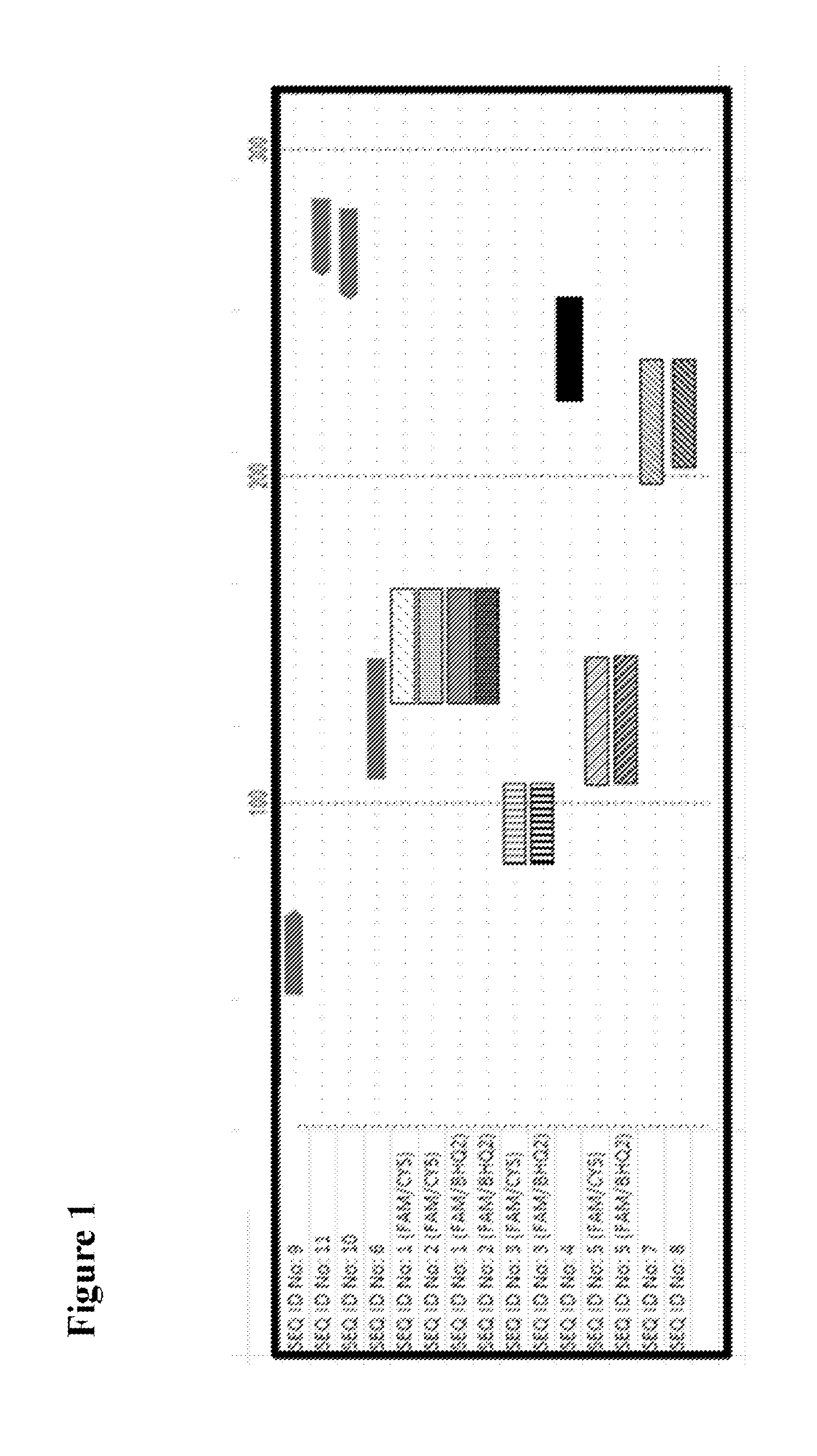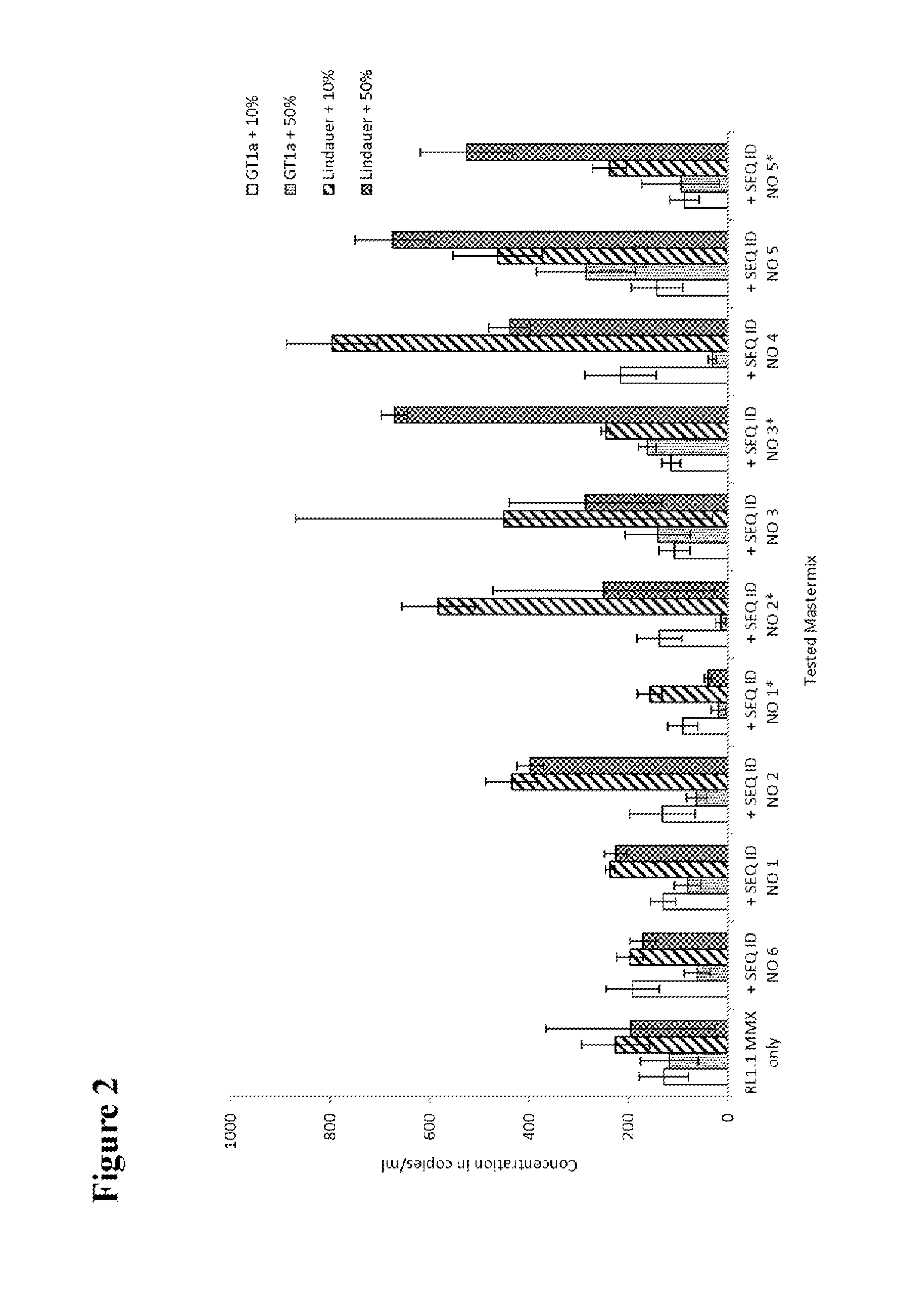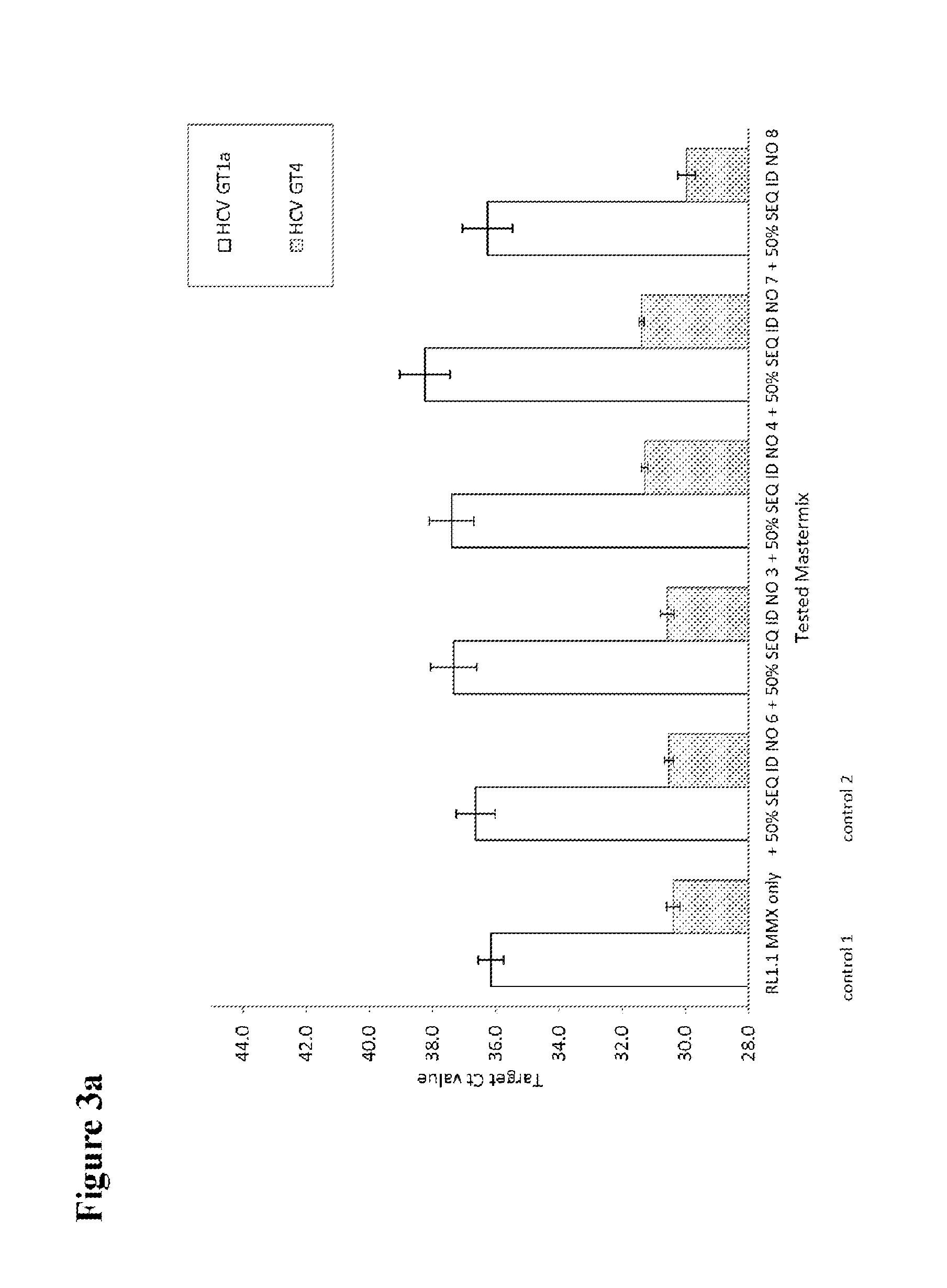Dual probe assay for the detection of hcv
- Summary
- Abstract
- Description
- Claims
- Application Information
AI Technical Summary
Benefits of technology
Problems solved by technology
Method used
Image
Examples
example 1
Sample Material
[0125]HCV patient samples for HCV subtype 1a, representing the standard HCV samples, and HCV subtype 4a, representing HCV samples with possible sequence variation in the standard probe binding region, were tested to check the effect of adding a second probe to the mastermix. HCV RNA transcripts representing HCV GT1a consensus sequence and transcripts of the 5′untranslated region of naturally occurring HCV isolates in the amplicon region were used to evaluate the different second probes.
Nucleic Acid Extraction:
[0126]Per reaction 1 ml of patient plasma sample material was used for nucleic acid extraction. If transcripts were used, about 500 cp / ml (for experiments shown in FIGS. 2, 3a and 3b) or about 50 000 cp / ml (for experiments shown in FIGS. 4a, 4b and 5) were added to a guanidinium thiocyanate-containing buffer to inactivate RNases and 1 ml was then processed in the same way as a normal sample. A number of 5 to 10 replicates of the patient samples and 4 to 6 replica...
example 2
[0134]The experiments presented here can also be carried out as follows: The commercially available Cobas® AmpliPrep / Cobas® TaqMan® HCV Test (manufactured by Roche Molecular Systems, Pleasanton, Calif., USA) is used for extracting HCV RNA from the patient and the transcript samples. Specimen preparation is automated using the Cobas® AmpliPrep Instrument and amplification / detection is automated using the Cobas® TaqMan® Analyzer or the Cobas® TaqMan® 48 Analyzer. The test is based on three major processes: (1) specimen preparation to isolate RNA from human EDTA plasma or serum and controls which are provided in secondary tubes on the Cobas® AmpliPrep Instrument; (2) reverse transcription of the target RNA and the Quantitation Standard / Internal Control RNA to generate complementary DNA (cDNA) and (3) PCR amplification of target cDNA and Quantitation Standard / Internal Control cDNA with simultaneous detection of the generated amplicons on the Cobas® TaqMan® Analyzer by cleavage of dual-l...
PUM
 Login to View More
Login to View More Abstract
Description
Claims
Application Information
 Login to View More
Login to View More - R&D
- Intellectual Property
- Life Sciences
- Materials
- Tech Scout
- Unparalleled Data Quality
- Higher Quality Content
- 60% Fewer Hallucinations
Browse by: Latest US Patents, China's latest patents, Technical Efficacy Thesaurus, Application Domain, Technology Topic, Popular Technical Reports.
© 2025 PatSnap. All rights reserved.Legal|Privacy policy|Modern Slavery Act Transparency Statement|Sitemap|About US| Contact US: help@patsnap.com



